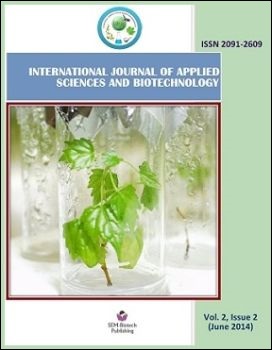Effect of Flue Gas on Microalgae Population and Study the Heavy Metals Accumulation in Biomass from Power Plant System
DOI:
https://doi.org/10.3126/ijasbt.v2i2.10247Keywords:
Biofuels, CO2 fixation, Flue gas, Heavy metals, MicroalgaeAbstract
Microalgae have high photosynthetic efficiency that can fix CO2 from the flue gas directly without any upstream CO2 separation, and concomitantly produce biomass for biofuel applications. These gases, both untreated and treated into current discharge standards, contain CO2, N2, H2O, O2, NOx, SOx, CxHy, CO, particulate matter, halogen acids and heavy metals. Microalgae population studies were conducted in a batch mode experiments at Power plant site of Chamois, Missouri. The experiments were conducted in different period (June to December 2011) of time. This study evaluated the effect of several heavy metals that are present in flue gases on the algae, focusing on the growth and accumulation of lipids in the algae that can be converted to biodiesel. The genus Scenedesmus presented the greatest richness of species and number of counted individuals in the flue gas ponds compare than non flue gas treatment ponds. Among the diatomaceae the genus Navicula sp, Nitizchia sp and Synedra sp. presented the next subdominant richness in the ponds. The last results of counted green algae Ulothrix sp and Coelastrum sp were least number of cells reported in these ponds. The heavy metal-contaminated in flue gas and also enter into the microalgae biomass population. Comparative studies were carried out by flue gas and control system of open ponds. Control system of microalgae population was represented in less amount of heavy metals compare than flue gas ponds.
DOI: http://dx.doi.org/10.3126/ijasbt.v2i2.10247
Int J Appl Sci Biotechnol, Vol. 2(2): 114-120




